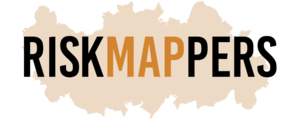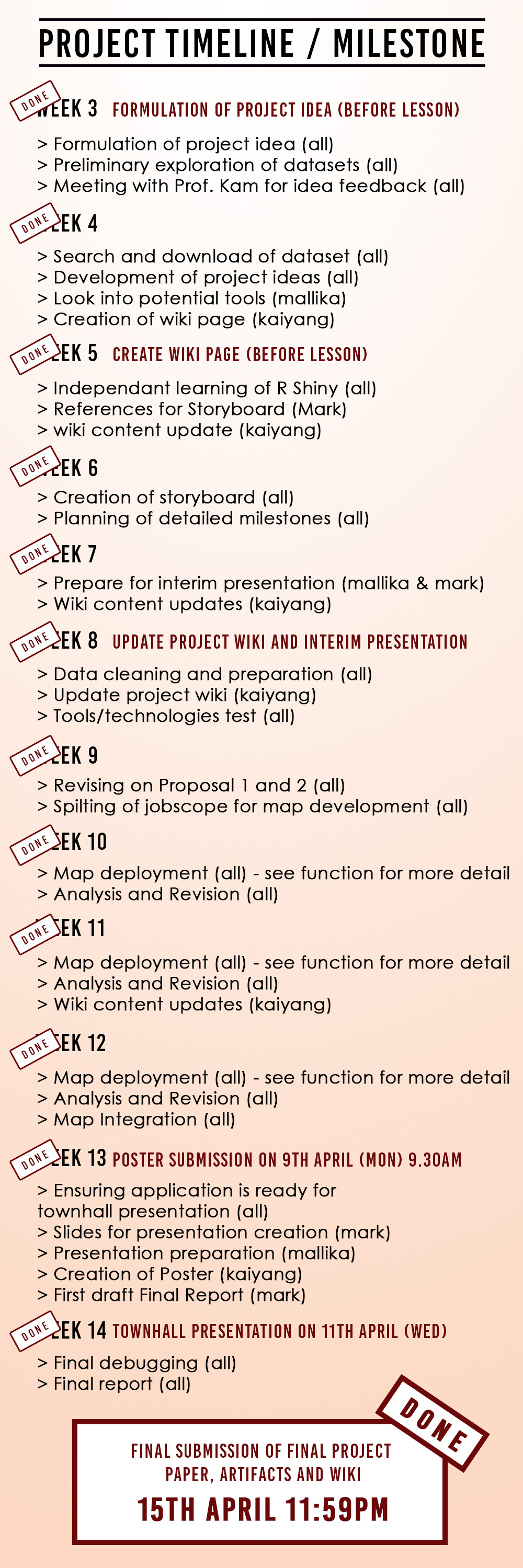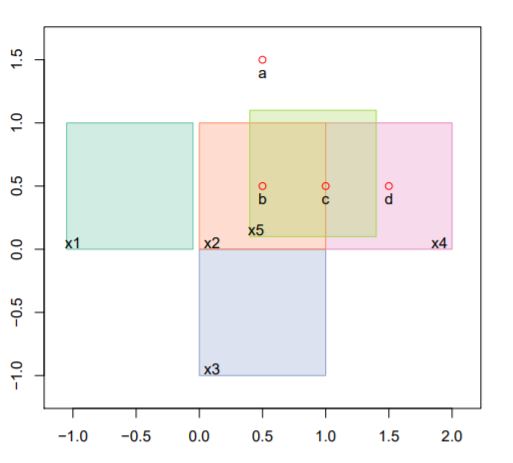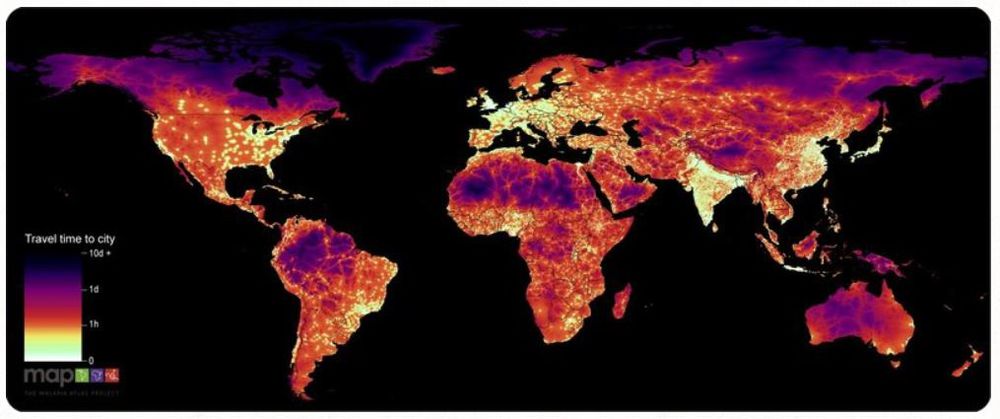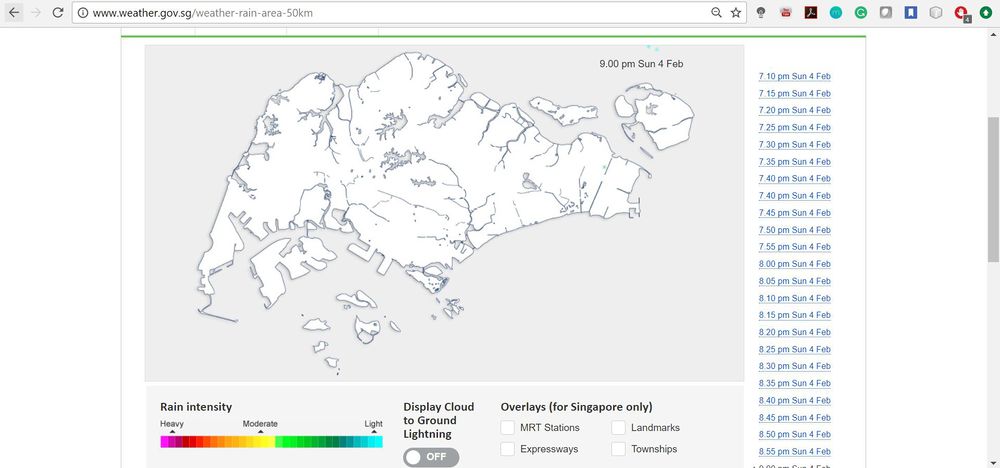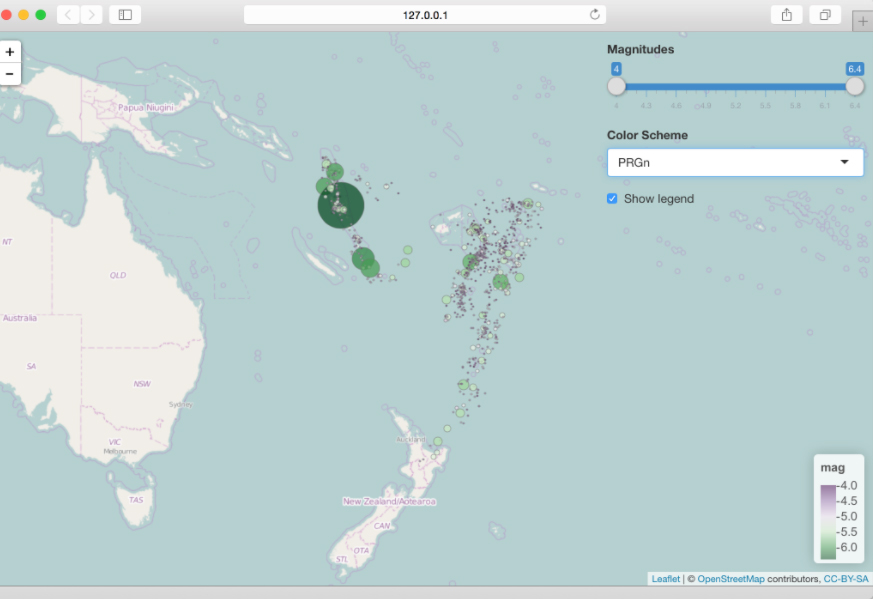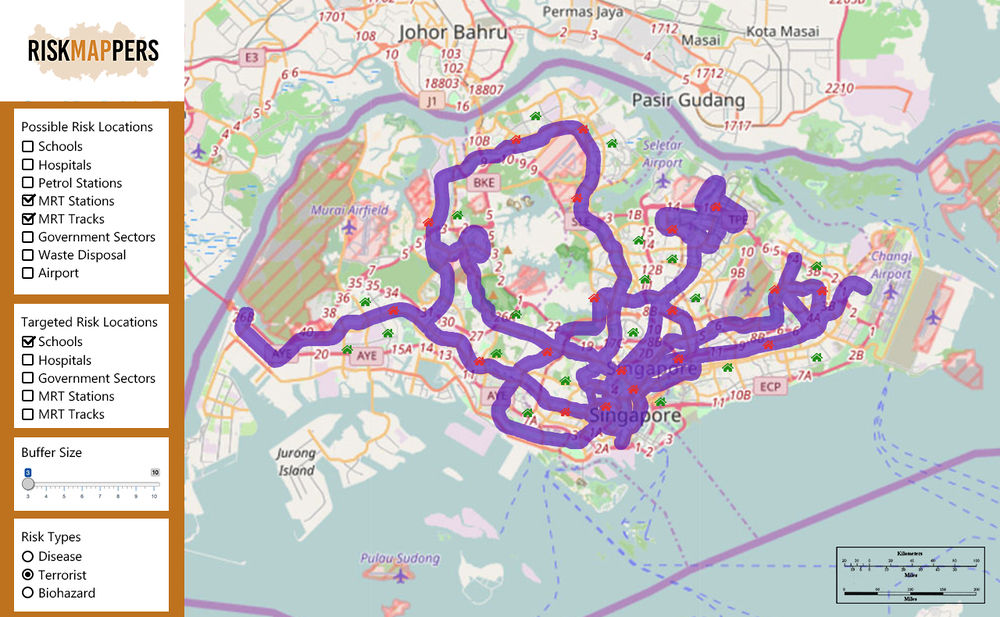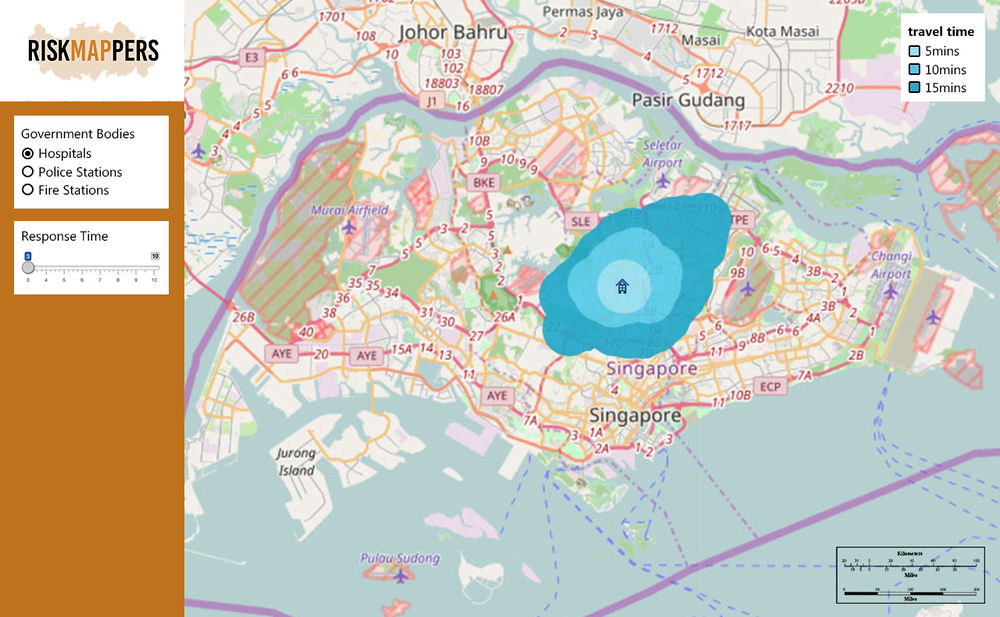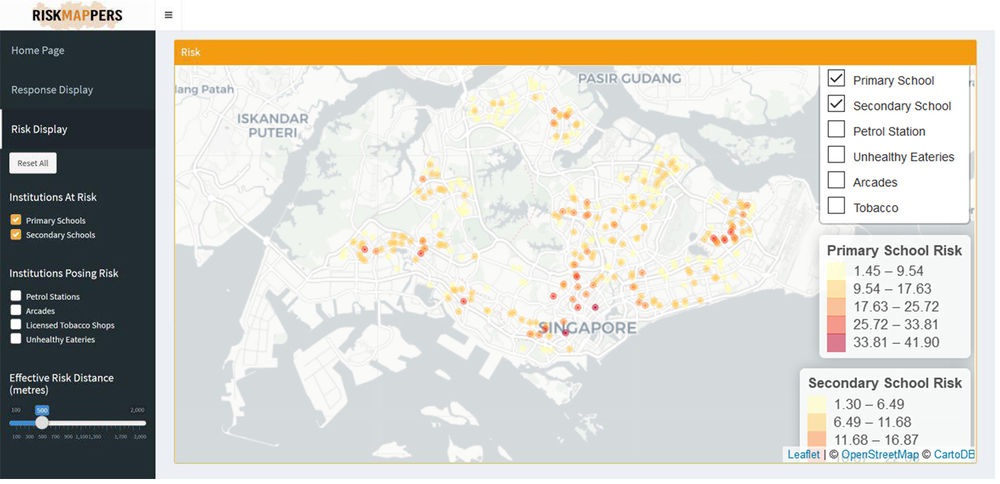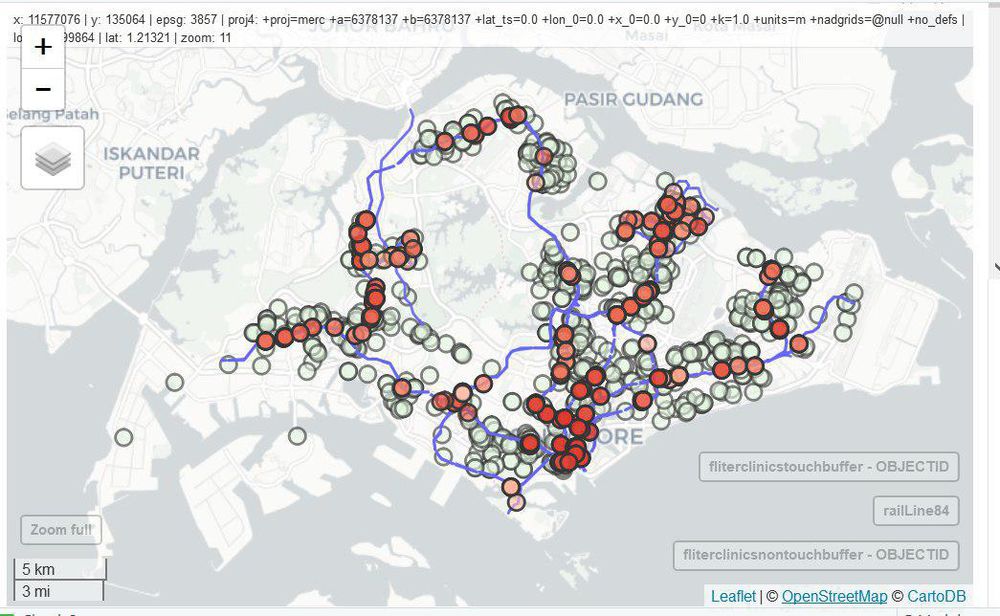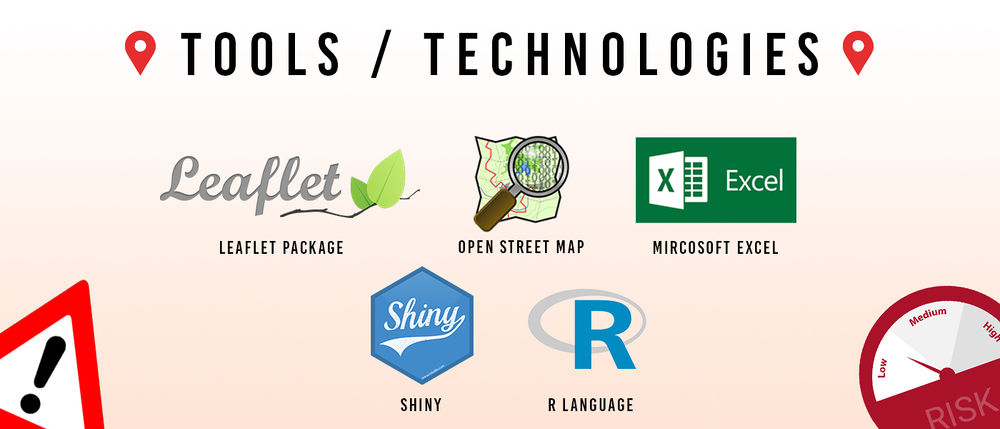Difference between revisions of "RiskMappers Proposal"
Kyfan.2015 (talk | contribs) |
Kyfan.2015 (talk | contribs) |
||
| Line 492: | Line 492: | ||
|- | |- | ||
| | | | ||
| − | <div style="text-align:center, text-size: 10px"><b>Proposal | + | <div style="text-align:center, text-size: 10px"><b>Proposal 2</b></div> |
|- | |- | ||
| | | | ||
Revision as of 22:34, 21 March 2018
|
Issue 1 1. Biological(biohazards), | |
|
Issue 2 1. Hospitals, |
|
Geographical Risk Analysis |
Each layer represents a specific area of risk which certain institutions pose to an individual. By including each layer it allows users to visualize possible risks in each locale.
|
|
Functionality |
1. Visual Risk Analysis |
|
Usage |
Our visualization allows users to comprehend how much potential risk each area is exposed to. From this information, we hope to aid in Singapore's goals of Smart City planning to take into consideration not only ease of access to the population but also the risk different institutions pose to inhabitants. |
|
Issue 1 | |
|
Issue 2 |
For now, our team's datasets are retrieved from https://data.gov.sg
|
Title |
Format |
Website Link |
|
Rail Stations and Line |
KML/SHP |
https://data.gov.sg/dataset/mp08-rail-station
|
|
Underground Line |
KML/SHP |
https://data.gov.sg/dataset/master-plan-2014-underground-line |
|
Community Use Sites |
KML/SHP |
|
|
Hospital |
CSV |
data retrieve from https://docs.onemap.sg/#onemap-rest-apis |
|
Police Station |
CSV |
data retrieve from https://docs.onemap.sg/#onemap-rest-apis |
|
Fire Station |
CSV |
data retrieve from https://docs.onemap.sg/#onemap-rest-apis |
|
Primary/Secondary School |
CSV |
data retrieve from https://docs.onemap.sg/#onemap-rest-apis |
|
Petrol Station |
Unformatted |
http://www.sgcarmart.com/news/carpark_index.php?LOC=all&TYP=petrol |
Our team is still searching online for more available datasets. Unformatted Data are in different formats (For example, Excel Format). We placed them as part of our data because we require some of the information inside the data. Our team will be doing data cleaning / data transformation on data do not have a proper KML/SHP file format.
This a ROUGH timeline of our entire project. Milestones indicated are according to IS415 AY1718 Project Wiki Page (Detailed timeline will be updated)
|
Function |
Developer |
Expected Completion Date |
Status |
|
Required Working Files: Sorting of SHP/KML and CSV files (get required conversion if needed) for application |
Kaiyang |
Week 10 |
Done |
|
Proposal 1: Conversion of Shape File to Raster Data |
Kaiyang |
Week 10 |
Delayed (due to required to complete of other module's work) |
|
Proposal 1: Linking required variables from Server code to UI code |
Kaiyang |
Week 11 |
In Progress |
|
Proposal 1: Calculation of Raster Data to show heatmap on Singapore Map |
Kaiyang |
Week 11 |
In Progress |
|
Proposal 1: Mapping Data onto Leaflet |
Kaiyang |
Week 11 |
In Progress |
|
Proposal 1: Integrating Code with UI |
Kaiyang |
Week 12 |
Not yet started |
|
User Guide: R Markdown User Guide |
Kaiyang |
Week 12 |
Not yet started |
|
Proposal 2: Testing One Map API to extract location data |
Mark |
Week 10 |
Done |
|
Proposal 2: Conversion of One Map CSV data to Spatial data for mapping |
Mark |
Week 10 |
Done |
|
Proposal 2: Calculate route distance and timing of Risk from K Nearest Neighbour of the Response layer |
Mark |
Week 11 |
In Progress |
|
Proposal 2: One Map API Extraction of Location Data to CSV files |
Mark |
Week 11 |
In Progress |
|
Proposal 2: Mapping data onto Leaflet Map |
Mark |
Week 11 |
In Progress |
|
Proposal 2: Linking required variables from Server code to UI code |
Mark |
Week 12 |
In Progress |
|
Proposal 2: Integrating Code with UI |
Mark |
Week 12 |
Not yet started |
|
User Interface: Number Sliders (for buffering / proximity timing), Dropdownlist (for Color, Basemap) |
Mallika |
Week 10 |
Done |
|
User Interface: Set up observation on R Server Code |
Mallika |
Week 10 |
Done |
|
Backend: Pre-loading of SHP/KML/CSV files to the server |
Mallika |
Week 11 |
In progress |
|
User Interface: Set up dynamic input/output and link with Map |
Mallika |
Week 11 |
In progress |
|
User Interface: Home Page to explain the project's goals and descriptions |
Mallika |
Week 11 |
Not yet started |
|
Server Development |
Mallika |
Week 12 |
Not yet started |
|
Server Debugging |
Mallika |
Week 12 |
Not yet started |
|
Topographic Map Singapore (http://en-sg.topographic-map.com/places/Singapore-1331643/) |
|
Using this as a reference to create a risk intensity map of the entire singapore based on the locations of the particular high risk structure and its risk factors |
|
Dengue Outbreak Mapping (http://outbreak.sgcharts.com) |
|
Using this as a reference to create a colored distance buffer for user to know if a location that user chose is beside a risk location. |
|
Weather Mapping (http://www.weather.gov.sg/weather-rain-area-50km) |
|
Using this as a reference to create each different risk in different colors. Adding checkboxes to allow filters in between risk based on conditions.
|
|
Shiny Example (http://shiny.rstudio.com/gallery/superzip-example.html) |
|
Using this as a reference to create R shiny map. |
|
Distance Length Mapping (https://rstudio.github.io/leaflet/shiny.html) |
|
Using this as a reference to create setting for response time estimation. |
|
Proposal 1
|
|
Our team plans to create a dashboard for our users to run an analysis on different risk factors and how it cause to some of Singapore key locations (Such as potential Terrorist attacks on MRT Stations) and how these risk locations can affect other locations nearby such as (Government Sectors location, MRT Stations, Schools, etc). User will be able to choose the specific risk type, potential risk locations, potential nearby locations that might be affected as well as set the buffer size for the risk identified. |
|
Proposal 2
|
|
Our team plans to create a dashboard for our users to run an analysis on different government bodied (Hospital, Police Station, Fire Station, etc) location and their ability to respond to emergency events at certain high risk location. User will be able to select a specific government body, response time and risk location to reach. |
|
Proposal 1
|
|
Our team plans to create a dashboard for our users to run an analysis on different risk factors and how it cause to some of Singapore key locations (Such as potential Terrorist attacks on MRT Stations) and how these risk locations can affect other locations nearby such as (Government Sectors location, MRT Stations, Schools, etc). User will be able to choose the specific risk type, potential risk locations, potential nearby locations that might be affected as well as set the buffer size for the risk identified. You may download our HTML file here, https://drive.google.com/file/d/1Lh5BZ8vJY7OM-P5F2Fcpz19wg4oWSzG6/view?usp=sharing |
|
Proposal 2
|
|
Our team plans to create a dashboard for our users to run an analysis on different government bodied (Hospital, Police Station, Fire Station, etc) location and their ability to respond to emergency events at certain high risk location. User will be able to select a specific government body, response time and risk location to reach. |
|
No. |
Key Technical Challenges |
Description |
Proposed Solution |
Outcome |
|
1. |
Unfamiliarity with R |
The team plans on using R and creating an R dashboard for the project. |
- Initial hands-on experience during class - DataCamp course on R shiny and geospatial analysis - Independent learning on R - Independent learning on R - Peer learning and sharing |
(Add Later) |
|
2. |
Data Cleaning and Transformation |
The data collected is generally in different formats. The scales of the data, the coordinate reference system etc. may all be different. |
Having a systematic process while working together in order to maximise efficiency e.g. taking turns to clean, transform and perform checks on the data to ensure accuracy. |
(Add Later) |
|
3. |
Integrating Relevant Data from Multiple Sources |
Narrowing down data collected to what is relevant to our project is imperative before we can begin its analysis. |
Working together and meeting up to understand and decide on what data to extract, to analyse or to reject. |
(Add Later) |
|
4. |
Information Presentation |
Determining the most effective way to visualise and display the data in an interactive format is of essence. It is necessary that the most important information is easily discernible from the map. |
Gain exposure to different mapping techniques. Follow and revisit techniqes explored in class Also look at datacamp courses. |
(Add Later) |
The following are the tools and technologies that our team currently aims on using (to be updated)
- Leaflet
- Open Street Map
- Mircosoft Excel
- Shiny
- R Language
- Digital Ocean
|
No. |
Website Name |
URL |
|
1. |
Innovative Solutions for a Smart City |
https://www.smartnation.sg/resources/innovative-solutions-for-a-smart-city |
|
2. |
Smart Nation Leveraging on Technology to Improve our Urban Environment |
https://www.smartnation.sg/initiatives/Living/leveraging-technology-to-improve-our-urban-environment |
|
3. |
Topographic Map |
|
|
4. |
Shiny Widget |
|
|
5. |
Shiny Dashboard |
https://rstudio.github.io/shinydashboard/ https://www.rstudio.com/resources/webinars/dynamic-dashboards-with-shiny/ |
We appreciate and cherish all comments. If you have any suggestion on how to improve our project. Please help us by keying in your name and comment. Don't worry, we want to know your name so that we can thank you and ask for more details. And we don't bite. (:
|
No. |
Name |
Date |
Comments |
|
1. |
Insert your Name here |
Insert Date here |
Insert Comment here |
|
2. |
Insert your Name here |
Insert Date here |
Insert Comment here |
|
3. |
Insert your Name here |
Insert Date here |
Insert Comment here |
